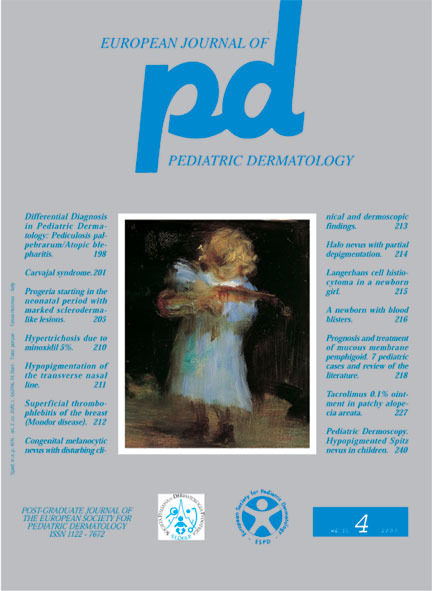Progeria starting in the newborn with scleroderma-like lesions. Case report.
Downloads
How to Cite
Pedicelli C., Angelo C., Cacciaguerra M.G., Palermi G., Stella P., Provini A., Paradisi M. 2007. Progeria starting in the newborn with scleroderma-like lesions. Case report. Eur. J. Pediat. Dermatol. 17 (4):205-9.
pp. 205-209
Abstract
Progeria also called Hutchinson-Gilford syndrome is a rarest disorder belonging to the group of "premature aging syndromes". It is characterized by severe growth retardation and alterations of the skin, muscle-bone and cardiovascular system, with consequent marked and premature aging and thus with significantly reduced life expectancy. Its symptoms and signs are multiple but uniform. This is why these patients look like members of the same family, sharing short stature, alopecia with macrocranium and prominent veins, micrognathia and mandibular hypoplasia, loss of subcutaneous fat, atrophic and thin skin, rider attitude with join stiffness, bone hypoplasia and falsetto voice. These symptoms and signs are not usually evident at birth and appear gradually, allowing the diagnosis between the first and second year of life. Here is reported a 7-year-old girl, who presented widespread scleroderma-like lesions as first sign of progeria in the neonatal period. The meaning of the disease is discussed taking into account the few similar cases reported in the literature.Keywords
Progeria, newborn, Scleroderma-like lesions

